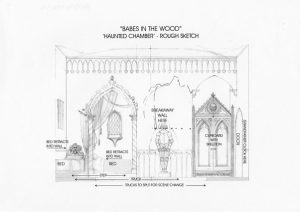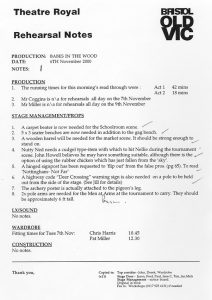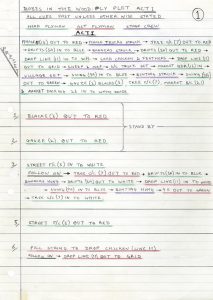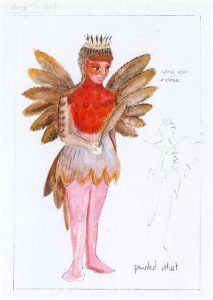Theatre is a collaborative art form. It takes a whole team of people to take a play from page to stage. All too often though, we only pay attention to the people performing onstage. Those who work backstage go unseen by the audience, and it is difficult to know just what they do, and what career opportunities exist.
Using Bristol Old Vic’s archives held at the University of Bristol Theatre Collection, Making A Scene (funded by the Museums Association Digital Innovation and Engagement fund) aims to fill this knowledge gap by giving young people across Bristol the chance to peek behind the curtain….
These blogs, written by staff involved in the project from the University of Bristol Theatre Collection, Bristol Old Vic and Zubr, a Bristol based Augmented Reality and Virtual Reality studio, are a behind the scenes look at the process of creating this behind the scenes resource.
Alongside creating an augmented reality resource for users to creatively re-imagine Babes in the Wood, we have been creating a physical book which allows for an in-depth exploration of the backstage documents created during the original run.
The original Babes in the Wood prompt script functions as an archive of the entire show from start to finish and our Making A Scene book is essentially a replica of it, into which we’ve woven a lot of additional content from the wider production archive. We’ve made some judicious edits (no one really wants to sit and read through a hundred show reports, hilarious as they often are) but the experience of leafing through the book is as close to going into the Theatre Collection and looking through the entire archive as we could make it.
Key pages of the prompt script had already been digitised as part of a previous heritage partnership project between Bristol Old Vic and the Theatre Collection. So rather than having to start from scratch, Athene and I simply had to compile and curate what we already had and find additional documents to fill in any gaps where we came across them. This was done in close collaboration with Sarah at the Theatre Collection and the team at Zubr, so we could make sure we had corresponding and contextual documents for each asset that had been 3D scanned for use in the augmented reality app.

Set design by Colin Winslow, Babes in the Wood, Bristol Old Vic Company (2000). BOV/3/2/732/1/2
Keeping our target audience of 16-25yrs olds in mind, we were also guided by the GCSE and A Level drama curricula. The backstage roles mentioned most frequently in the GCSE curriculum are: set designer; costume designer; lighting designer; sound designer and stage manager. We therefore decided to focus the content for the book around these roles. Rather than keeping the prompt script in its original, slightly haphazard, order we created a separate chapter for each role and divided the documents between them. Within each chapter the documents are laid out in chronological order so readers can trace the entire production journey from start to finish. The curriculum mentions that students should be able to demonstrate knowledge of the activities each creative professional undertakes on a day-to-day basis, so we made sure to include shopping lists, meeting minutes and handwritten first drafts of hanging plots, alongside the more obviously ‘big ticket attractions’ like costume designs or stage plans.

Rehearsal notes, Babes in the Wood, Bristol Old Vic Company (2000). BOV/3/2/732/1/1

Fly plot, Babes in the Wood, Bristol Old Vic Company (2000). BOV/3/2/732/1/1
We also wrote an introduction to each chapter with background information about each role and what it involves.
It was while putting this content together that the benefits of choosing a production within living memory became clear to us. Over the course of the project we have had amazing conversations with several members of the original creative team. These conversations formed the basis of our chapter introductions and added further insight into what each backstage role really involves. Sue Mayes, who designed the costumes for Babes in the Wood, spoke to us about the importance of allowing performers to have input into their own costumes and the issues this can sometimes cause. For example, pantomime dame Chris Harris insisted on only wearing Dr Marten boots, which were well above Sue’s budget. And Amanda Adams, who was a member of the stage management team, demonstrated exactly why they are known as the glue which holds a production together by revealing that she went onstage at the last minute when the actress playing Fairy Tweep fell ill!

Costume design by Sue Mayes, Babes in the Wood, Bristol Old Vic Company (2000). BOV/3/2/732/5
Theatre is a live art form. What happens on stage will never happen again. But we hope that based on our work everyone using Making A Scene will get a sense of what it takes to bring a production like Babes in the Wood to life.
The finished book will be accessible on several levels. You will be able to sit and pore over it for hours, absorbing every intricate detail of a prop design or anecdote in a show report. It is also a resource young people can actively engage with by creating their own designs in augmented reality using the models Sarah has digitised and the app Zubr are creating. Amy from Zubr will be talking more about the process of creating the app in the next project blog.
